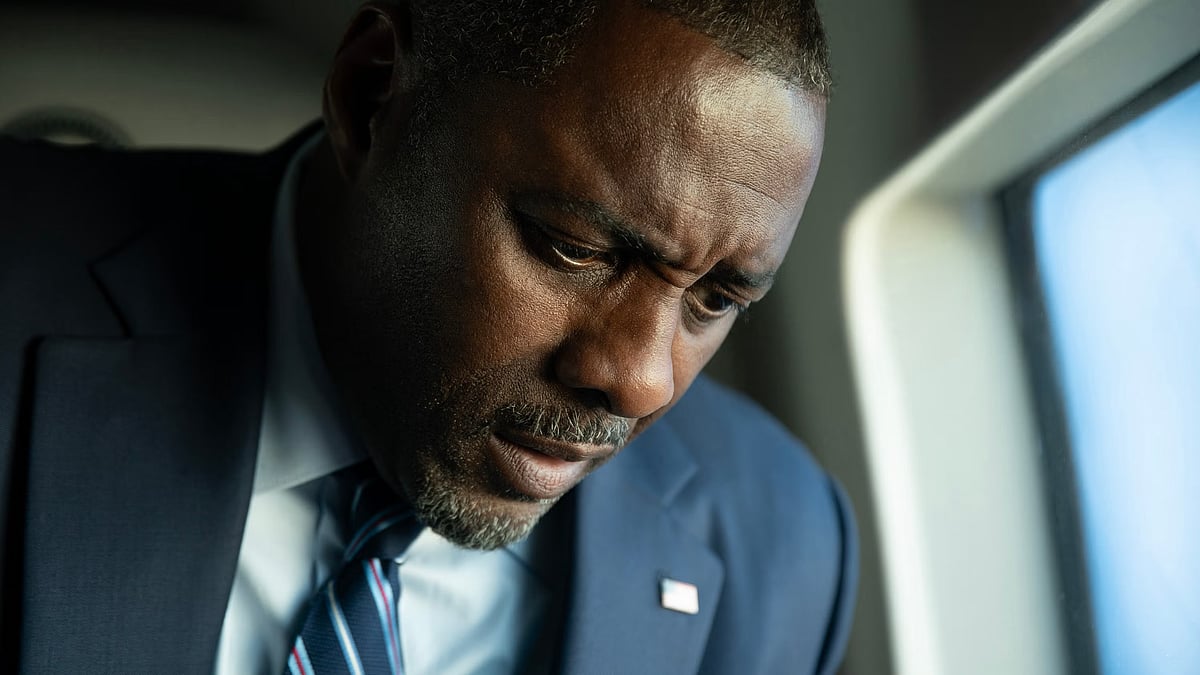A House of Dynamite’s ending is either brilliant or infuriating — depending on who you ask
The ending to this claustrophobic film has led to several explosions on social media

Kathryn Bigelow’s A House of Dynamite had all the makings of a cinematic detonation — a ticking clock, a nuclear threat, and Idris Elba as the President with the literal fate of humanity in his hands. And yet, when the screen cut to black just as the Commander-in-Chief was about to make the biggest decision in human history....suddenly, we get what feels like a cop out.
Welcome to the internet’s latest meltdown.
The setup: 18 minutes to save the world
Bigelow traps us inside war rooms, command centers, and the claustrophobic Situation Room, where some of America’s sharpest minds — and most anxious egos — try to stop an unidentified intercontinental ballistic missile headed for Chicago.
We see it all unfold three times, Rashomon-style:
Round One: Through the eyes of Captain Olivia Walker (Rebecca Ferguson), cool-headed but quietly terrified.
Round Two: From the perspective of Deputy NSA Jake Baerington (Gabriel Basso), who’s caught between military hawks and political panic.
Round Three: Through POTUS himself (Idris Elba), trying to decide whether to end the world or surrender it.
As the clock ticks, chaos brews — interceptors fail, a general wants to strike first, and the Secretary of Defense (Jared Harris) loses his daughter in Chicago. Everyone’s unraveling. So far, so thrilling.
Then, just when we think Bigelow’s about to drop the cinematic bomb of the decade — the screen cuts to black. No answer. No explosion. Just the sound of everyone’s popcorn hitting the floor.
Why the ending upset everyone
To be clear, Bigelow didn’t 'forget' the ending. She chose ambiguity. Screenwriter Noah Oppenheim even explained that leaving the attacker unidentified and the President’s choice unresolved was meant to shift blame from individuals to systems — the world’s fragile nuclear balance, one mistake away from annihilation.
Great in theory. But audiences didn’t come for a philosophy lecture. They came for closure — or at least an explanation of the tension they had been choking on for two hours.
Instead, Bigelow gave us existential dread, static corridors, and men in suits arguing about DEFCON levels. She wanted us to sit with the horror of indecision. But for viewers, it felt like watching someone slowly build a house of dynamite, light the fuse… and then turn off the camera.
The emotional fallout
Twitter (or X, if you insist) has been a post-apocalyptic wasteland since the credits rolled:
“You’re telling me I spent 130 minutes watching powerful people panic and I don’t even get to know if Chicago survives?”
“The only explosion was my blood pressure.”
“Bigelow said, ‘What if Oppenheimer but with no payoff?’”
Even critics who praised the film’s nerve-shredding realism admitted the rewind structure fizzled out the tension it built so masterfully in the first act. By the third replay, the urgency felt like déjà vu — all doom, no boom.
But when you’ve watched everyone spiral into despair, you need something — even a single frame of light or ruin. Instead, we’re left staring into moral purgatory, wondering if Bigelow’s daring statement is genius or just… unfinished.
The message that got lost
Oppenheim said the movie isn’t about who fires the missile, but why the system exists where one person can decide the fate of billions in under twenty minutes. Fair. But most viewers didn’t walk away debating geopolitics — they walked away checking Reddit for leaked alternate endings.
It’s not that audiences can’t handle ambiguity. (Inception, Sopranos, anyone?) It’s that A House of Dynamite spends so long building unbearable tension that the lack of resolution feels like emotional whiplash.
In a film so meticulously wound around time, not giving us an ending feels less like commentary and more like being ghosted mid-conversation by the apocalypse.
It’s gutsy. It’s maddening. It’s A House of Dynamite — a film that went out not with a bang, but with a blackout.
Network Links
GN StoreDownload our app
© Al Nisr Publishing LLC 2025. All rights reserved.